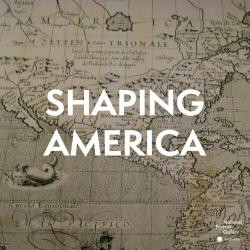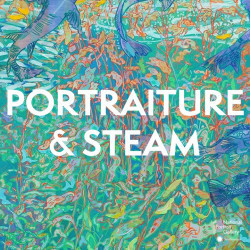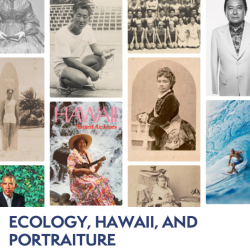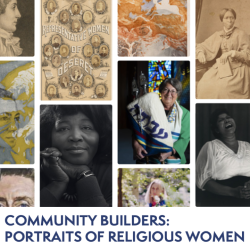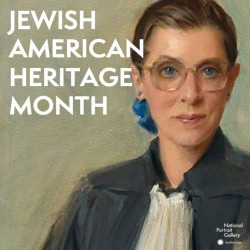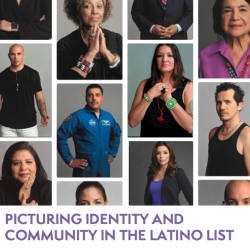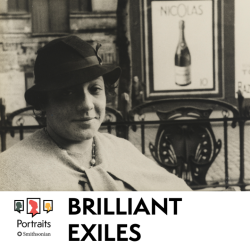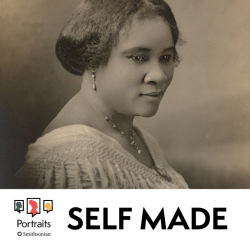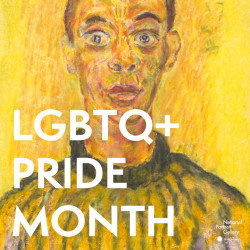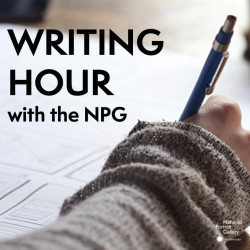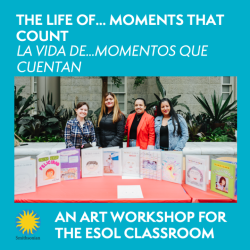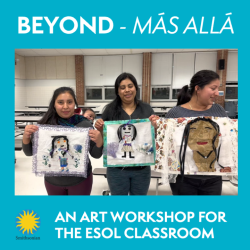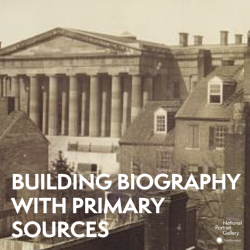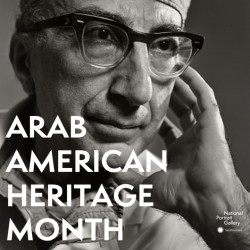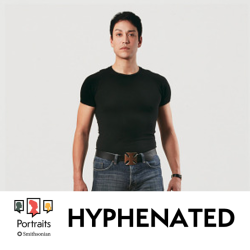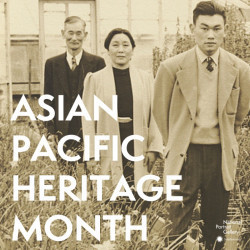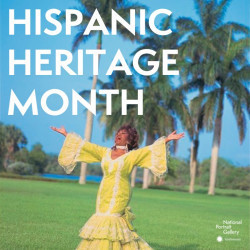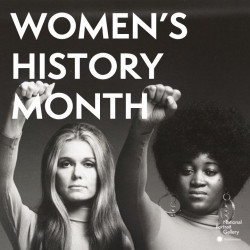Nicole Vance Nash's collections
Black History Month with the National Portrait Gallery
<p>Meet the Black Americans who shaped the history, development, and culture of the United States of America from 1700-present. Use this collection to celebrate Black History Month and embrace Black voices in your classroom year-round! </p>
<p>This collection mirrors parts rather than the whole of African American history and culture. It also reflects the history of portraiture in the United States, we recognize that who is represented and how one is represented reflects the country's flaws as well as it's strengths<br></p>
<p>#NPGteach</p>
 Nicole Vance Nash
Nicole Vance Nash
241
Shaping America: Exploring Portraiture from the Colonial Era to the Civil War
<p>This Learning Lab complements the National Portrait Gallery's student program, Shaping America.</p>
<p>Meet the politicians, reformers, inventors, authors, soldiers, and others who shaped the course of American history from the Colonial Era through the Civil War. Students will analyze portraits to learn about the diverse and significant contributions to American society made by individuals in the National Portrait Gallery’s collection.</p>
<p>#NPGteach<br></p>
<p><strong>Objectives:</strong> After completing this lesson, students will be better able to:</p>
<ul><li> Identify important Americans and analyze their contributions to U.S. History</li><li>Identify key components of a portrait and discuss what we can learn about the sitter through these components</li></ul>
<p><strong>Keywords: </strong>Colonies, Revolutionary War, Westward Expansion, Civil War, Abolition, Suffrage</p>
 Nicole Vance Nash
Nicole Vance Nash
72
Portraiture and STEAM (Science, Technology, Engineering, Art, and Math)
<p>This Learning Lab Collection complements the National Portrait Gallery student program, Portraiture and STEAM.</p>
<p></p>
<p>Students will explore the ways portraiture can be a springboard to discuss STEAM concepts (Science, Technology, Engineering, Art, and Math). By analyzing portraits, students will consider the sitters’ stories and recognize their contributions to the various STEAM fields. During the program, there will be opportunities to examine a broad range of STEAM topics to allow for classroom connections and emphasis on relevance. </p>
<p></p>
<p>After completing the program, students will be better able to:</p>
<ul><li>Identify key components of a portrait and discuss what one can learn about the sitter through these components.</li><li>Identify and analyze the contributions that sitters made in their STEAM fields of expertise.</li><li>Use the museum’s collection and portraiture as a springboard to exploring a variety of STEAM concepts.</li></ul>
<p>#NPGteach</p>
 Nicole Vance Nash
Nicole Vance Nash
75
Jewish American Heritage Month with the National Portrait Gallery
<p>Meet the Jewish Americans who shaped the history, development, and culture of the United States of America. Use this collection to celebrate Jewish Heritage Month and embrace Jewish voices in the classroom year round.<em> </em>This collection features some but not all portraits of Jewish American sitters found in the National Portrait Gallery's permanent collection. <em>Please note that the sitters in this collection are American citizens who are Jewish whether by culture, ethnicity, or religion. </em></p>
<p>#NPGteach<br></p>
 Nicole Vance Nash
Nicole Vance Nash
236
Identity and Community in The Latino List
<p>This collection explores portraits from photographer Timothy Greenfield-Sanders's <a href="https://npg.si.edu/portraits/collection-search?edan_local=1&edan_q=Latino%2BList&" title="https://npg.si.edu/portraits/collection-search?edan_local=1&edan_q=Latino%2BList&" target="_blank" data-msys-clicktrack="0" rel="nofollow noopener noreferrer">The Latino List</a> using the following strategies: Strike a Pose; Same, Different, Connect, Engage; Seek to See; and Lenses.</p>
<p>This collection is part of the the National Portrait Gallery's Classroom Conversations Series. Classroom Conversations is a virtual teacher workshop series that uses portraiture to explore topics and themes related to history and heritage months throughout the school year.<br></p>
 Nicole Vance Nash
Nicole Vance Nash
42
PORTRAITS Podcast: Crossing the Border
<p>In this lesson, students will explore the artistic journey of Hugo Crosthwaite, focusing on how his work reflects experiences of border-crossing, migration, and the pursuit of the American Dream. Students will also analyze the power of storytelling through visual art, particularly in Crosthwaite’s stop-motion animation, <em>A Portrait of Berenice Sarmiento Chávez</em>. </p>
<p>This lesson was written by Dahlia H. Constantine, Gallery Educator at the National Portrait Gallery.</p>
<p>#NPGteach</p>
 Nicole Vance Nash
Nicole Vance Nash
25
Writing Hour with the National Portrait Gallery
<p>Explore portraiture through storytelling and creative writing! Writing Hour with the National Portrait Gallery is a space where writers can create, connect, and draw inspiration from the museums collection. We recommend you spend some time reading your chosen portrait before writing. New to reading portraiture? Learn about interpreting portraiture through the elements of portrayal in <a href="https://www.youtube.com/watch?v=7xU8wC7sQl8&list=PLoiUVJmnCbmCsHkQlMj1Lr4YOfEh27OML&index=6">this video</a>. </p>
<p>This Learning Lab collection features writing prompts created by literary host, Willona Sloan. Discover new portraits through writing by joining us virtually every Tuesday from 5:00pm-6:00pm EST for Writing Hour with the National Portrait Gallery. Register <a href="https://www.eventbrite.com/e/virtual-writing-hour-with-the-national-portrait-gallery-tickets-99411309904">here</a>.</p>
<p>#NPGteach<br></p>
 Nicole Vance Nash
Nicole Vance Nash
131
The Life of....Moments that Count - La vida de...Momentos que cuentan
<p>In this collection, ESOL (English for Speakers of Other Languages) students will understand the value of their observations, the impact of their voices, and the power of sharing their unique stories. <a href="https://lillibros.com/">Lil' Libros</a> and the National Portrait Gallery's exhibition <a href="https://npg.si.edu/exhibition/portraiture-now-kinship">Kinship</a> were used as inspiration for the lessons in this collection. Using these portraits and books as an entry point, students will develop a sense of confidence and belonging that transmits to their families and communities.</p>
<p>This collection is based of a fall 2023 workshop that was part of a long-standing partnership with between Fairfax County Public Schools Family Literacy ESOL Program, the National Portrait Gallery, and the Smithsonian Office of Educational Technology. </p>
<p>Educators of the workshop include: Beth Evans (NPG), Micheline Lavalle (FCPS), and Philippa Rappoport (OET).</p>
<p>Please note: the Spanish elements in this collection reflect the first language spoken by most participants in the fall 2023 Family Literacy workshop.</p>
<p>#FamilyLit #FamilyLiteracy #FCPSFamilyLiteracy</p>
 Nicole Vance Nash
Nicole Vance Nash
43
The Beyond - Más allá
<p>In this collection, ESOL (English for Speakers of Other Languages) students will understand the value of their observations, the impact of their voices, and the power of sharing their unique stories. Using portraits from the National Portrait Gallery’s 2022 Outwin Portrait Competition as a case study, students will develop a sense of confidence and belonging that transmits to their families and communities.</p>
<p>This collection is based of a fall 2022 workshop that was part of a long-standing partnership with between Fairfax County Public Schools Family Literacy ESOL Program, the National Portrait Gallery, and the Smithsonian Office of Educational Technology. </p>
<p>Educators of the workshop include: Beth Evans (NPG), Micheline Lavalle (FCPS), and Philippa Rappoport (OET).</p>
<p>Please note: the Spanish elements in this collection reflect the first language spoken by most participants in the fall 2022 Family Literacy workshop.</p>
<p></p>
<p>#FamilyLit #FamilyLiteracy #FCPSFamilyLiteracy</p>
 Nicole Vance Nash
Nicole Vance Nash
42
PORTRAITS Podcast: Hyphenated - The Intersect of Asian-American Stories in the United States
<p>In this lesson, students will analyze historical contexts through the exploration of portraiture, discuss the artistic choices that portrait artists make and consider how such decisions can reveal the artists’ viewpoints and influence the viewers’ understanding of the sitters’ identity. </p>
<p>This lesson was written by Asia Stanislaus, a member of the National Portrait Gallery's Teacher Advisory Board, who teaches at MS 447 in Brooklyn, New York.</p>
 Nicole Vance Nash
Nicole Vance Nash
28
Asian American and Pacific Islander Heritage Month with the National Portrait Gallery
<p>Meet the Asian Americans and Pacific Islander Americans who shaped the history, development, and culture of the United States of America. Use this collection to celebrate Asian American and Pacific Islander Heritage Month and embrace AAPI voices in the classroom year round.<br></p>
<p>#NPGteach<br></p>
 Nicole Vance Nash
Nicole Vance Nash
190
Hispanic Heritage Month with the National Portrait Gallery
<p>Meet the Hispanic Americans who shaped the history, development, and culture of the United States of America. Use this collection to celebrate Hispanic Heritage Month and embrace Hispanic voices in the classroom year round.<br></p>
<p>#NPGteach</p>
<p><strong>Keywords: </strong>Portraits, Hispanic Heritage Month, Latinx History Month, Latina, Latino, Afro-Latino, Puerto Rican, Nuyorican, Chicana, Chicano, Scientists, Writers, Artists, Musicians, Actors, Activists, Government</p>
 Nicole Vance Nash
Nicole Vance Nash
215


